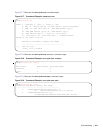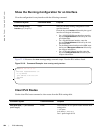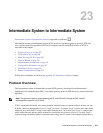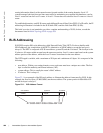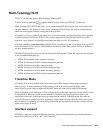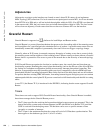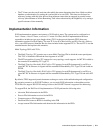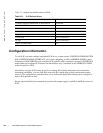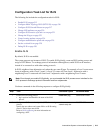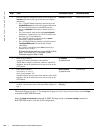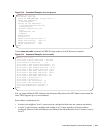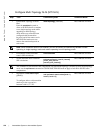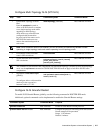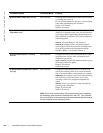Intermediate System to Intermediate System | 511
• The T3 timer sets the overall wait time after which the router determines that it has failed to achieve
database synchronization (by setting the overload bit in its own LSP). This timer can be based on
adjacency settings with the value derived from adjacent routers that are engaged in graceful restart
recovery (the minimum of all the Remaining Time values advertised by the neighbors) or by setting a
specific amount of time manually.
Implementation Information
IS-IS implementation supports one instance of IS-IS and six areas. The system can be configured as a
Level 1 router, a Level 2 router, or a Level 1-2 router. For IPv6, the IPv4 implementation has been
expanded to include two new type-length-values (TLV) in the protocol data unit (PDU) that carry
information required for IPv6 routing. The new TLVs are IPv6 Reachability and IPv6 Interface Address.
Also, a new IPv6 protocol identifier has also been included in the supported TLVs. The new TLVs use the
extended metrics and up/down bit semantics.
Multi-Topology IS-IS adds TLVs:
• The Multi-Topology TLV contains one or more Multi-Topology IDs in which the router participates.
This TLV is included in IIH and the first fragment of an LSP.
• The MT Intermediate Systems TLV appears for every topology a node supports. An MT ID is added to
the extended IS reachability TLV type 22.
• The Multi-Topology Reachable IPv4 Prefixes TLV appears for each IPv4 announced by an IS for a
given MT ID. Its structure is aligned with the extended IS Reachability TLV Type 236 and it adds an
MT ID.
• The Multi-Topology Reachable IPv6 Prefixes TLV appears for each IPv6 announced by an IS for a
given MT ID. Its structure is aligned with the extended IS Reachability TLV Type 236 and add a MT
ID.
By default, FTOS supports dynamic hostname exchange to assist with troubleshooting and configuration.
By assigning a name to an IS-IS NET address, you can track IS-IS information on that address easier.
FTOS does not support ISO CLNS routing; however, the ISO NET format is supported for addressing.
To support IPv6, the Dell Force10 implementation of IS-IS performs the following tasks:
• Advertise IPv6 information in the PDUs
• Process IPv6 information received in the PDUs
• Compute routes to IPv6 destinations
• Download IPv6 routes to RTM for installing in the FIB
• Accept external IPv6 information and advertise this information in the PDUs



